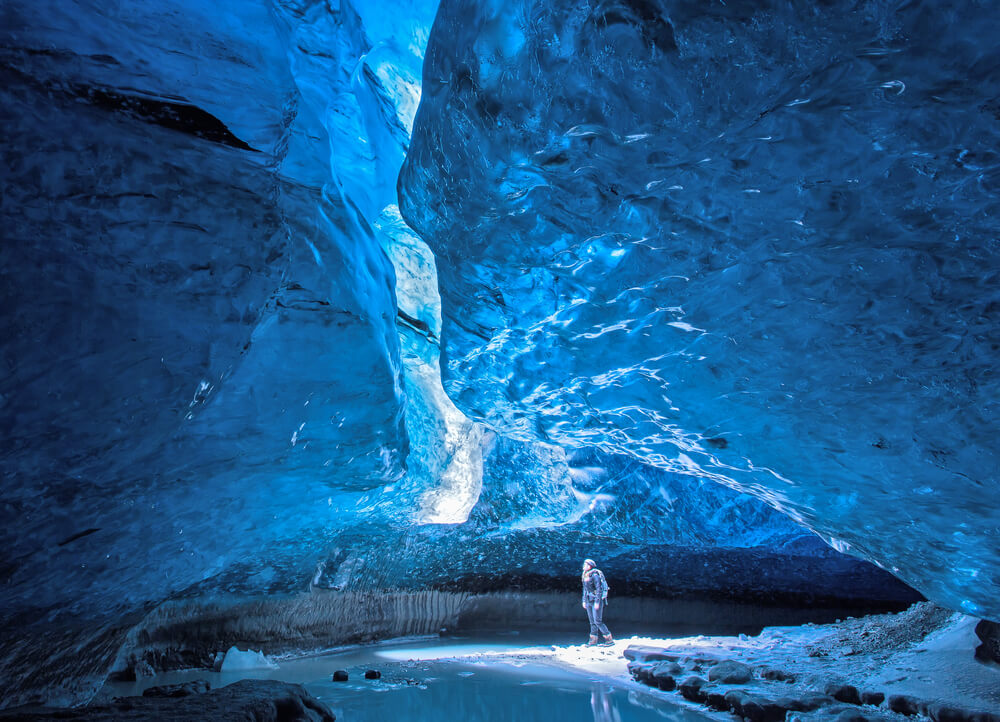Scientists have discovered new mysterious life forms in caves in Hawaii
In Hawaii, in ancient geothermal caves, lava tubes and volcanic vents, scientists recently discovered an amazing array of new microbes. ScienceAlert.

Фото: Depositphotos
Microbes are the smallest known living organisms on Earth and can be found just about anywhere, even in the cold Martian conditions of lava caves.
These underground structures were formed 65 and 800 years ago and receive little to no sunlight. They may also contain toxic minerals and gases. However, microbial mats are a common feature of Hawaiian lava caves.
On the subject: 'Living Library': the world is conquered by places where you can 'read' an interesting person
Samples of these layers, taken between 2006 and 2009 and then again between 2017 and 2019, show even more unique lifeforms than expected. When the researchers sequenced 70 samples for a single RNA gene, commonly used to determine microbial diversity and abundance, they were unable to match any results to known genera or species, at least not with a high degree of certainty.
“This suggests that caves and fumaroles are poorly understood diverse ecosystems,” the authors of the study write.
Microbes, after plants, make up the majority of our planet's biomass and almost all of the biomass in the Earth's interior. However, because these organisms are so tiny and live in such extreme environments, scientists have historically ignored them.
In recent years, there has been more interest in underground microbes because they exist in an environment very similar to that found on Mars. But there is still a long way to go.
Recent estimates show that 99,999% of all microbial species remain unknown, leading some to call them "dark matter".
A new study from the Hawaiian Islands highlights how little known these lifeforms are.
The variety was different. Older lava tubes, 500 to 800 years old, had a more diverse population of microbes than geothermally active sites.
While these older sites were more diverse, the younger and more active sites of the samples had more complex microbial interactions, likely due to less diversity. Microbes may have to work together to survive better.
The researchers suspect that microbes take some time to colonize volcanic basalts, and as the environment around them changes, so does the structure of their community. For example, in cooler caves Proteobacteria and Actinobacteria predominate.
“This leads to the question of whether extreme conditions help create more interactive microbial communities, in which microorganisms are more dependent on each other,” asks microbiologist Rebecca Prescott of the University of Hawaii at Manoa. “And if so, what is it about extreme conditions that helps create this?”
In younger lava caves, the microbes were more distantly related. This suggests that competition is stronger in harsher environments, which makes it less likely that closely related species will live side by side.
Several classes of bacteria, such as Chloroflexi and Acidobacteria, existed in almost all places, regardless of age.
These microbes appear to be key players in their communities. The authors call them "hub" species because they combine other microbes. It is possible that Chloroflexi microbes can provide carbon sources in an ecosystem using light energy in relatively dark conditions.
You may be interested in: top New York news, stories of our immigrants, and helpful tips about life in the Big Apple - read it all on ForumDaily New York.
But so far this is just speculation. Because only one gene was partially sequenced in the study, Prescott and her colleagues can't say what a particular microbe's role is in their underground community.
“Overall, this study helps illustrate the importance of studying microbes in co-culture rather than growing them separately as isolates,” says Prescott.
“In the natural world, microbes do not grow in isolation. Instead, they grow, live, and interact with many other microorganisms in a sea of chemical signals from those other microbes. This can then change their gene expression, affecting how they function in society,” she says.
Read also on ForumDaily:
Aquaman star Jason Momoa involved in car accident in Los Angeles
Bottled water has an expiration date: why it matters
Subscribe to ForumDaily on Google NewsDo you want more important and interesting news about life in the USA and immigration to America? — support us donate! Also subscribe to our page Facebook. Select the “Priority in display” option and read us first. Also, don't forget to subscribe to our РєР ° РЅР ° Р »РІ Telegram and Instagram- there is a lot of interesting things there. And join thousands of readers ForumDaily New York — there you will find a lot of interesting and positive information about life in the metropolis.











